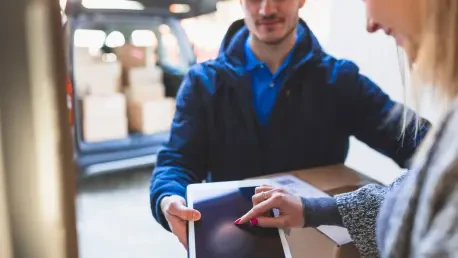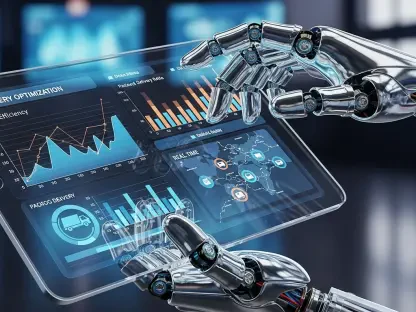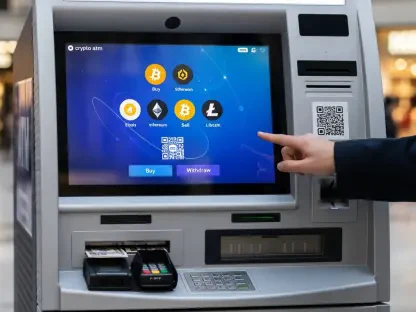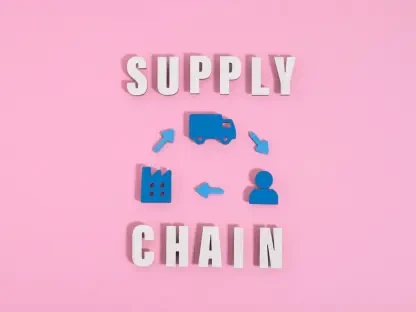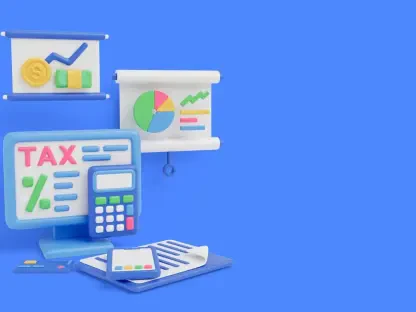The Evolution of Delivery in Modern Retail
The retail delivery landscape has undergone a seismic shift, moving from a backend logistical necessity to a pivotal customer touchpoint that can make or break brand perception. In today’s hyper-competitive market, the speed, transparency, and personalization of delivery are not just conveniences but expectations that define consumer satisfaction. Tech-first retailers, with their deep integration of digital tools, have emerged as trailblazers in this space, recognizing that a seamless delivery experience can significantly enhance customer loyalty and drive repeat business.
These retailers stand out by prioritizing technology to streamline operations, setting themselves apart from traditional players. The focus on delivery as a strategic asset has reshaped competitive dynamics, with major companies like Amazon and Walmart leading the charge through vast investments in logistics innovation. The global e-commerce delivery market, valued at over $400 billion, continues to expand as consumer demand for faster, more reliable services grows, pushing industry standards to new heights.
This transformation is fueled by evolving consumer expectations, where same-day delivery and real-time tracking are no longer luxuries but necessities. With over 80% of shoppers stating that delivery experience influences their decision to repurchase, retailers are compelled to adapt swiftly. The stakes are high, as delivery has become an extension of brand identity, demanding constant innovation to maintain a competitive edge in a crowded marketplace.
Key Innovations Shaping Delivery Experiences
Cutting-Edge Technologies in Delivery Systems
At the forefront of delivery transformation are groundbreaking technologies that optimize every step of the process. Artificial intelligence (AI) plays a critical role in demand forecasting, analyzing vast datasets to predict inventory needs and prevent stockouts, ensuring orders are fulfilled without delay. Meanwhile, robotic fulfillment systems in warehouses boost efficiency by automating picking and packing, reducing human error and accelerating turnaround times.
Beyond AI and robotics, micro-fulfillment hubs are revolutionizing last-mile delivery. These compact, strategically located facilities near urban centers enable retailers to store inventory closer to consumers, slashing delivery times and costs. Such innovations collectively allow for faster, more accurate operations, addressing the pressing need for speed in densely populated areas where logistics challenges are most acute.
The impact of these technologies extends to cost-effectiveness, enabling retailers to scale operations without proportional expense increases. By automating repetitive tasks and optimizing delivery routes with real-time data, companies can redirect resources to customer-facing improvements. This technological edge is rapidly becoming a benchmark for success in retail delivery systems.
Market Impact and Growth Potential
The adoption of tech-driven delivery solutions has yielded measurable benefits, with industry data indicating a reduction in delivery times by up to 40% for leading retailers. This improvement directly correlates with heightened customer satisfaction, as faster service meets the modern shopper’s need for immediacy. Surveys consistently show that streamlined delivery processes enhance trust, encouraging long-term engagement with brands.
Looking ahead, the growth trajectory for technology in retail delivery remains robust, with projections suggesting widespread adoption of same-day delivery as a standard by 2027. From the current year, this trend is expected to drive significant market expansion, with investments in automation and AI poised to unlock new efficiencies. The opportunity to capture consumer preference through speed and reliability presents a lucrative frontier for retailers willing to innovate.
Emerging opportunities also lie in expanding personalized delivery options, supported by data analytics that tailor services to individual needs. As competition intensifies, the ability to offer unique, tech-enabled experiences will likely define market leaders. This forward momentum signals a future where delivery is not just a service but a key differentiator in retail strategy.
Challenges in Transforming Delivery Experiences
Despite the promise of technology, tech-first retailers face substantial hurdles in overhauling delivery systems. High implementation costs for advanced tools like AI and robotics pose a significant barrier, particularly for smaller players with limited capital. These expenses, coupled with the need for continuous upgrades, can strain budgets and delay widespread adoption across diverse markets.
Scalability issues further complicate the landscape, especially in urban environments where traffic congestion and zoning restrictions hinder efficient last-mile delivery. Balancing the push for speed with sustainability adds another layer of difficulty, as consumers demand eco-friendly practices without compromising on convenience. Retailers must navigate these conflicting priorities while maintaining profitability in a cost-sensitive industry.
To address these challenges, strategic partnerships with specialized fulfillment providers offer a viable path forward. Collaborations can distribute financial burdens and provide access to established infrastructure, easing the transition to tech-driven models. Additionally, phased technology rollouts allow companies to test innovations on a smaller scale, mitigating risks and refining approaches before full deployment.
Regulatory and Ethical Considerations in Tech-Driven Delivery
The integration of technology in delivery systems operates within a complex regulatory framework that shapes retailer strategies. Data privacy laws, for instance, impose strict guidelines on how personalized delivery tracking systems handle consumer information, requiring robust safeguards to maintain trust. Non-compliance can result in hefty fines and reputational damage, making adherence a top priority.
Environmental regulations also play a significant role, pushing retailers toward carbon-neutral practices amid growing scrutiny of logistics’ ecological footprint. Mandates for reduced emissions and sustainable packaging compel companies to rethink traditional delivery models, often necessitating investments in electric fleets or route optimization software. These requirements, while challenging, align with broader consumer values around environmental responsibility.
Ethical considerations further influence technology deployment, as retailers must balance efficiency with fair labor practices and transparency. Compliance with consumer protection standards ensures that delivery innovations do not compromise service quality or safety. By embedding ethical principles into their strategies, retailers can build credibility and foster long-term relationships with stakeholders, even as regulations continue to evolve.
The Future of Delivery in Tech-First Retail
Emerging trends point to a delivery landscape increasingly defined by hyper-personalization, where consumers expect options tailored to their schedules and preferences. The potential of drone delivery, though still in early stages, promises to redefine speed and accessibility, particularly in hard-to-reach areas. Further integration of AI for predictive logistics will enhance preemptive inventory management, minimizing delays before they occur.
Potential disruptors, such as autonomous vehicles, loom on the horizon, offering a glimpse into a future of fully automated last-mile solutions. Shifting consumer preferences toward sustainability and transparency will likely accelerate the adoption of green technologies, compelling retailers to prioritize eco-conscious innovations. These changes underscore the dynamic nature of delivery as a field ripe for continuous reinvention.
Global economic conditions and technological breakthroughs will undoubtedly shape the growth of tech-driven delivery systems. Retailers must remain agile, adapting to fluctuating costs and geopolitical factors that impact supply chains. As innovation accelerates, the ability to anticipate and respond to these influences will determine which companies lead the charge in redefining customer experiences through delivery.
Conclusion: The Path Forward for Retail Delivery
Reflecting on the insights gathered, it is evident that tech-first retailers have reshaped delivery into a cornerstone of customer satisfaction and brand differentiation. Their strategic use of technology has not only met but often surpassed consumer expectations, setting a new bar for what delivery can achieve in retail. The journey highlights how integral innovations like AI and automation have been to this transformation.
Looking ahead, retailers should prioritize sustained investment in scalable technologies to stay competitive. Forming alliances with logistics experts and focusing on sustainable practices will be critical steps to address ongoing challenges. These actions can ensure that delivery remains a powerful tool for building customer trust.
Moreover, exploring untapped potential in autonomous systems and personalized services should be a key focus. By aligning innovation with evolving consumer values, companies can position themselves as pioneers in a rapidly changing landscape. This proactive approach will cement delivery as a vital asset for long-term growth and loyalty.
